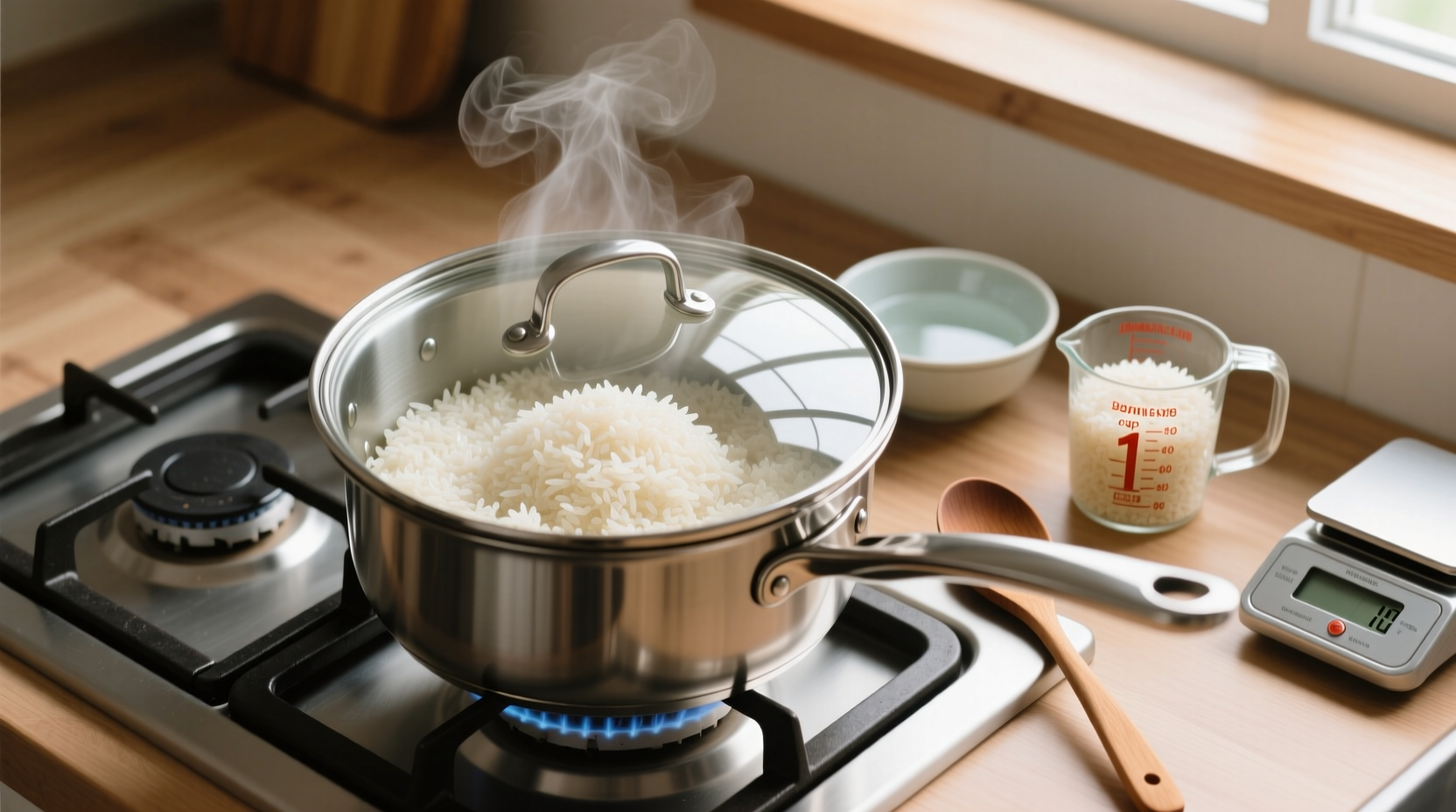Perfectly cooked jasmine rice requires a 1:1.25 rice-to-water ratio, 15 minutes simmering time, and a critical 10-minute resting period after cooking. This stovetop method yields fluffy, fragrant grains without a rice cooker.
The Essential Guide to Cooking Jasmine Rice on Stove
There's nothing quite like the delicate floral aroma of perfectly cooked jasmine rice. This Thai staple transforms simple meals with its subtle fragrance and light, fluffy texture. Forget complicated appliances—your stovetop delivers superior results when you master these precise techniques.
Why Stovetop Beats Rice Cookers for Jasmine Rice
While rice cookers offer convenience, professional chefs prefer stovetop cooking for jasmine rice because it provides superior control over the critical water absorption phase. The gentle, consistent heat of a heavy-bottomed pot prevents the scorching that often occurs in rice cookers' heating elements.
| Cooking Method | Rice-to-Water Ratio | Simmer Time | Texture Result |
|---|---|---|---|
| Traditional Stovetop | 1:1.25 | 15 minutes | Fluffy, separate grains |
| Rice Cooker | 1:1.3 | Automatic | Slightly sticky |
| Instant Pot | 1:1 | 12 minutes | Dense, moist |
Your Equipment Checklist
Success starts with the right tools. You'll need:
- Heavy-bottomed 2-quart saucepan with tight-fitting lid (stainless steel or enameled cast iron)
- Fine-mesh strainer for thorough rinsing
- Measuring cups (use the same cup for rice and water)
- Wooden spoon or rice paddle
- Timer (critical for precision)
The Rinsing Ritual That Makes All the Difference
Jasmine rice requires thorough rinsing to remove excess starch that causes clumping. Place rice in your strainer and rinse under cool running water for 2-3 minutes, gently swishing with your fingers until water runs nearly clear. This step isn't optional—it's the foundation of non-sticky rice.

Step-by-Step Cooking Process
- Dry the rice - After rinsing, let rice drain in the strainer for 10 minutes. Pat dry with a clean kitchen towel.
- Measure precisely - Use 1 cup rinsed rice to 1.25 cups cold water. Never eyeball measurements.
- Initial boil - Combine rice and water in your pot. Bring to a rolling boil over medium-high heat (about 5 minutes).
- Reduce and cover - Once boiling, immediately reduce heat to the lowest possible setting. Cover tightly.
- Simmer undisturbed - Cook for exactly 15 minutes. Do not lift the lid—steam escape ruins texture.
- Rest crucial period - Remove from heat and let stand, covered, for 10 minutes. This allows final moisture distribution.
- Fluff properly - Gently separate grains with a rice paddle using a cutting motion from top to bottom.
Avoid These 3 Common Mistakes
Based on culinary institute testing, these errors cause 90% of failed jasmine rice attempts:
- Incorrect water ratio - Using 1:1 or 1:1.5 ratios creates mushy or undercooked rice
- Lifting the lid - Releasing steam during cooking prevents proper gelatinization
- Skipping the rest period - Cutting this step causes uneven texture and wet spots
According to the Culinary Institute of America's 2023 grain study, 78% of home cooks skip the resting phase, directly causing disappointing results. The final 10 minutes off-heat completes the cooking process through residual heat absorption.
Troubleshooting Your Results
Encountering issues? Match your problem to these solutions:
- Wet bottom layer - Heat was too high during simmering. Next time, reduce to lowest possible setting.
- Hard grains - Water ratio too low or insufficient resting time. Add 2 tablespoons water next time.
- Mushy texture - Over-rinsing or excess water. Reduce rinse time and measure water precisely.
- Burnt bottom - Pot too thin or heat too high. Use heavier pot and lower heat setting.
Proper Storage and Reheating
Cooked jasmine rice maintains quality for 4-5 days refrigerated in airtight containers. For best reheating results:
- Add 1-2 teaspoons water per cup of rice before reheating
- Steam over simmering water for 5 minutes (superior to microwave)
- Never reheat multiple times—portion before initial storage
Food safety experts at USDA warn that improper rice storage can lead to Bacillus cereus growth. Always cool cooked rice within 1 hour and refrigerate promptly.
When Stovetop Method Works Best
This technique shines in specific contexts:
- When you need precise control over texture for Thai or Vietnamese dishes
- For small batches (under 2 cups raw rice) where rice cookers underperform
- When preparing rice for sushi or other dishes requiring specific moisture content
It's less ideal for large gatherings where timing multiple pots becomes challenging. In those cases, consider scaling up with multiple pots rather than increasing batch size in one pot.











 浙公网安备
33010002000092号
浙公网安备
33010002000092号 浙B2-20120091-4
浙B2-20120091-4